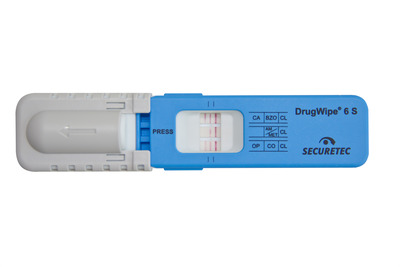Workplace drug and alcohol testing: keeping it in-house
Tuesday, 18 February, 2014
Companies with workers engaged in safety-critical work are likely to be familiar with the need for workplace drug and alcohol testing. But many may not have considered the benefits of managing this process in-house. According to Pathtech Account Manager Larissa Galanti, it is possible for the drug and alcohol testing to be conveniently and easily conducted in-house, without sacrificing accuracy.
With an estimated 62% of harmful drug and alcohol users in full-time employment, the need for workplace testing can be considered necessary in many safety-critical industries. “By administering your own testing program you can have greater control of this critical process,” says Galanti.
According to Pathtech, some of the many benefits of managing the testing process in-house are:
- Reduced costs as outsourcing testing to a service provider can be expensive.
- Retaining control over testing - this is especially important in the case of incident testing to rule out drug use when a third party may not be immediately available.
- Can be scaled up with ease and used on remote or smaller sites that may not have previously warranted the additional cost of an outsourced visit.
- Allows employers to remain responsive and flexible to adjust to changes such as increasing random testing if required to ensure safety remains the priority.
Choosing a drug testing method
When it comes to choosing the drug testing method for an on-site workplace procedure, there are a number of factors that should be considered. There has been much debate over saliva versus urine drug testing methods. A NSW Government-owned electricity network company recently lost its third legal attempt to force staff to undergo urine tests for drug and alcohol use. In this case, Fair Work Australia found the use of urine testing was “unjust and unreasonable” because it could detect drug use from days earlier, rather than more recent use that could lead to impairment at work.
The role of drug and alcohol testing in the workplace should be about identifying potential impairment to make sure the worker is fit to work rather than for disciplining staff for their ‘lifestyle’ choices.
According to Pathtech, saliva testing has a number of advantages over urine testing for an on-site drug testing program and these include:
- Less invasive to the person being testing.
- Can be carried out without the need for specialised facilities.
- Shorter window of detection for drugs - this is why it is known as ‘fitness for work’ testing as saliva testing is detecting recent drug use as opposed to history of drug use (or a ‘lifestyle’ test).
- More comfortable for both workers being tested and safety officers carrying out the testing.
Galanti says a number of questions should be asked in order to identify a quality saliva drug test. These include:
- Does it meet the Australian standard? The device should meet Australian Standard 4760:2006.
- What are the test cut-off levels? Not all devices are the same, some are more sensitive than others.
- How effectively does the test detect marijuana/cannabis? The ability to detect the parent compound (delta-9-THC) is a valuable feature.
- How much of a sample is required? The greater the volume of saliva required for the test, the more time-consuming and less comfortable the whole process will be for all involved.
- Do you need to handle the saliva sample? If the saliva sample does not need to be handled by the tester, this has obvious advantages concerning comfort for staff as well as improving simplicity of the testing procedure.
- What is the total testing time? Ask how long saliva collection will take as well as how long the test will take to run to gain a better understanding of the total time and resources needed to be allocated to the testing procedure.
- Can you rely on the result? Request proof of accuracy or ‘failure’ rates from the supplier for the product to compare the accuracy of different devices.
- What is the shelf life of your testing device? If testing frequency of the on-site program is not high, it is important to look for a device with a longer shelf life.
- What training is available? Consistent training is important to ensure all staff carrying out the testing will be doing so in a uniform manner, reducing variation between results.
- How long has the supplier been operating? It is important to consider the number of years of industry experience the company supplying the kits has had to ensure its ongoing support.
The Securetec DrugWipe from Pathtech is suitable for on-site testing due to its simple one-step application and fast results (total test time 8 minutes). Requiring only one wipe down the tongue to collect enough saliva for the test to run, the device is quick and simple to use. Workers can get back on the job quicker and the device is comfortable to use for both the administrator and the recipient of the test.

The device provides reliable results. “If you have ever been drug tested by the roadside you would have experienced firsthand the simplicity of the saliva DrugWipe. The same device is used by all Australian Police jurisdictions for roadside drug screening,” says Galanti. Pathtech can also provide comprehensive training to ensure all the staff are fully trained and consistent in the administration of the in-house testing procedures.

Top tips: Starting a workplace drug and alcohol testing program
Implementing a comprehensive and robust workplace testing program can help to reduce drug- and...
Workplace drug and alcohol programs: some key considerations
When it comes to substance abuse in the workplace, construction is considered one of the...
Saliva-based drug testing tech drives bus group safety
An advanced drug and alcohol testing solution has been adopted by a bus operator to ensure the...











